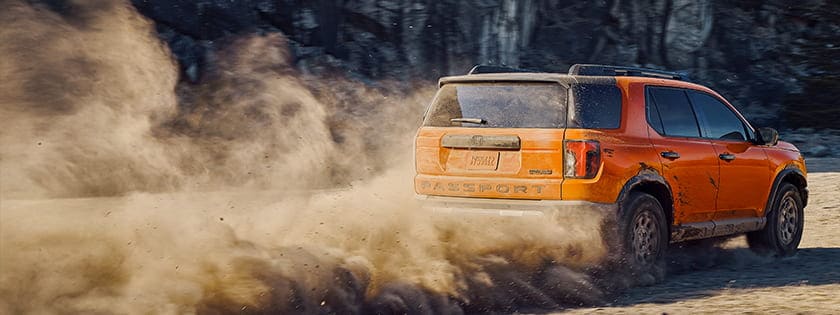
2012 Lexus LFA vs. 2011 Porsche 911 GT2 RS. What we've got here is approximately $635,000 worth of alphabet soup with a combined 1,172 horsepower. We never thought we'd pit a Lexus against a 911 either, but in the end, while their approaches are worlds apart, these cars are both about going fast -- damn the cost.
The 2011 Porsche 911 GT2 RS is the latest in a decades-long refinement project by Porsche to build the best car the 911 could ever be. And if this isn't the peak, we're scared to see what is. The GT2 RS gets its 620 horsepower from a twin-turbo flat-6 mounted in the rear of the car and hooked to a six-speed manual transmission. This is how a Porsche should be.
Conversely, the 2012 Lexus LFA is in no way what a Lexus should be. Errr, let's rephrase that, it is in no way what Lexus is right now. There's not even a hybrid badge on it. Five-hundred fifty-two horsepower dumps out of a screaming 4.8-liter V10 that sounds barely removed from Toyota's F1 efforts. The transmission is a six-speed auto-clutch manual that, again, sounds and feels race-ready. The LFA doesn't feel like a Lexus, it feels like the future.
So it's the old school against the new school. V10 against flat-6. Turbos against revs and displacement. Porsche against....Lexus?
Vehicle: 2011 Porsche 911 GT2 RS
Odometer: 1,465
Date: 4/12/2011
Driver: Chris Walton
Price: $260,980
Specifications:
Drive Type: Rear-engine rear-wheel drive
Transmission Type: Six-speed manual
Engine Type: DOHC, 3.6-liter Flat-6
Displacement (cc/cu-in): 3,599cc (220 cu-in)
Redline (rpm): 6,800
Horsepower (hp @ rpm): 620 @ 6,500
Torque (lb-ft @ rpm): 516 @ 2,250
Brake Type (front): 15-inch two-piece ventilated carbon-ceramic discs with 6-piston fixed calipers
Brake Type (rear): 13.8-inch two-piece ventilated carbon-ceramic discs with 4-piston fixed calipers
Steering System: Hydraulic-assist speed-proportional rack-and-pinion steering
Suspension Type (front): Independent MacPherson struts with dual lower ball joints, coil springs, stabilizer bar
Suspension Type (rear): Independent multilink, coil springs, stabilizer bar
Tire Size (front): 245/35 ZR19 (88Y)
Tire Size (rear): 325/30 ZR19 (101Y)
Tire Brand: Michelin
Tire Model: Pilot Sport Cup
Tire Type: Summer, asymmetrical
Wheel size: 19-by-9 inches front/19-by-12 inches rear
Wheel material (front/rear): Forged aluminum
As tested Curb Weight (lb): 3,167 (38.7% front bias)
Test Results:
Acceleration
0-30 (sec): 2.0
0-45 (sec): 2.7
0-60 (sec): 4.1 (see update below)
0-60 with 1-ft Rollout (sec): 3.8
0-75 (sec): 5.2
1/4-mile (sec @ mph): 11.64 @ 127.24
Braking
30-0 (ft): 24
60-0 (ft): 100
Handling
Slalom (mph): 72.5
Skid Pad Lateral acceleration (g): 1.03
Sound
Db @ Idle: 61.1
Db @ Full Throttle: 85.1
Db @ 70 mph Cruise: 73
RPM @ 70 mph: 2,150
Tester's Comments:
Acceleration: With stability/traction off, there's still some electronic management of A) allowable revs at a standstill and B) power/torque being made in the engine. Result is bogging launch with reduced power then a rush of power when it comes back online. I believe the electronics are keeping mechanical parts from breaking. Also, the tach needle is slow, so the shift light is critical to not hitting the rev limiter. Finally, it feels as if there is a pretty massive torque reduction between each upshift.
**Update: Our scan tool found a fault code in the GT2 -- not displayed with a warning light -- regarding wheel speed sensors which could explain the launch. We will re-test if possible. **
Braking: Incredibly hard pedal, zero dive un-fadeable brakes. The only difference in distance from run to run is attributable to the surface of the track.

Slalom: In the Porsche 911 tradition, the only way through a slalom course is with progressive throttle application -- otherwise (and even with maintenance throttle) the rear steps out. Luckily, the tires break free progressively, not abruptly. Best run is slow-in/fast-out to best utilize the LSD on exit -- and it works beautifully, rocketing through the finish line at W.O.T.
Skid pad: Large discrepancy between clockwise and counter-clockwise with driver inboard, (CCW) the car would oversteer slightly and controllably. However, with driver outboard, the car would understeer. Either way, the steering is highly informative and weighted just right.

Vehicle: 2012 Lexus LFA
Odometer: 2,994
Date: 4/12/2011
Driver: Josh Jacquot
Price: $375,000
Specifications:
Drive Type: Front-engine rear-wheel drive
Transmission Type: Six-speed single-clutch automated manual
Engine Type: 4.8-liter V10 3.6-liter V6 (clearly the GT2)Displacement (cc/cu-in): 4,805cc (293 cu-in)
Redline (rpm): 9,000
Horsepower (hp @ rpm): 552 @ 8,700
Torque (lb-ft @ rpm): 354 @ 6,800
Brake Type (front): 15.4-inch carbon-ceramic vented discs with six-piston aluminum calipers
Brake Type (rear): 14.2-inch carbon-ceramic vented discs with four-piston aluminum calipers
Steering System: Electric-assist speed-proportional rack-and-pinion steering
Suspension Type (front): Independent, coil springs, double wishbone, stabilizer bar
Suspension Type (rear): Independent, multilink, coil springs, stabilizer bar
Tire Size (front): 265/35 ZR20 (95Y)
Tire Size (rear): 305/30 ZR20 (99Y)
Tire Brand: Bridgestone
Tire Model: Potenza S001
Tire Type: Summer, asymmetrical
Wheel size: 20 inches front and rear
As tested Curb Weight (lb.): 3,546 (50.1% front bias)
Test Results:
Acceleration
0-30 (sec): 1.9
0-45 (sec): 2.7
0-60 (sec): 3.9
0-60 with 1-ft Rollout (sec): 3.6
0-75 (sec): 5.1
1/4-Mile (sec @ mph): 11.63 @ 123.18
Braking
30-0 (ft): 27
60-0 (ft): 106
Handling
Slalom (mph): 75.1
Skid Pad Lateral acceleration (g): 1.02
Sound
Db @ Idle: 52.3
Db @ Full Throttle: 92.3
Db @ 70 mph Cruise: 71.9
RPM @ 70 mph: 2,950
Tester's Comments:
Acceleration: Default run in "auto" shifts @ 7,800 and C-R-A-W-L-S off the line. Otherwise, best launch came from a 3,000 rpm neutral drop with careful throttle modulation. 4,500 rpm -- per Lexus -- just smokes the tires.
Braking: Solid, consistent, stink-free stops. This test doesn't even touch the capability of this system.
Slalom: Incredibly well suited to the slalom. Balance and communication very good. Power delivery (high revs, little torque) very good for slalom. Easy to control as I rolled back into throttle at end of slalom. ESC is fully defeatable.
Skid pad: Very easy to find limit of grip and drive right to it. Third gear best for skid pad to reduce throttle sensitivity. ESC on drives like a Toyota -- can use WOT and simply steer. ESC off means balancing against the throttle. Powerslides are easy.





